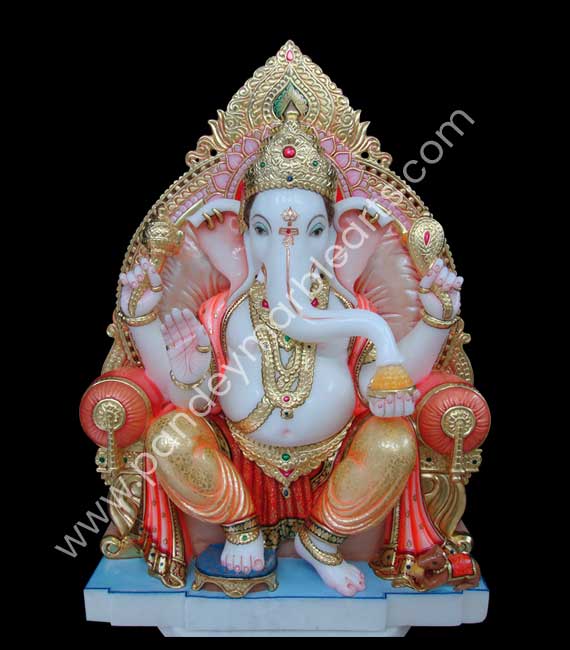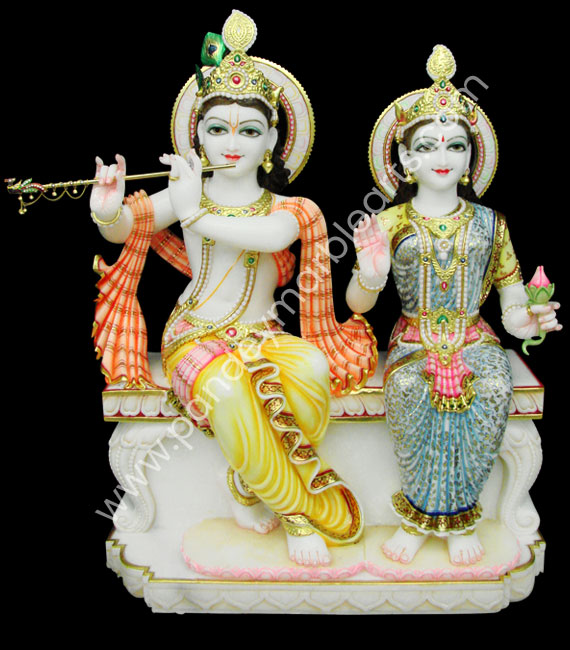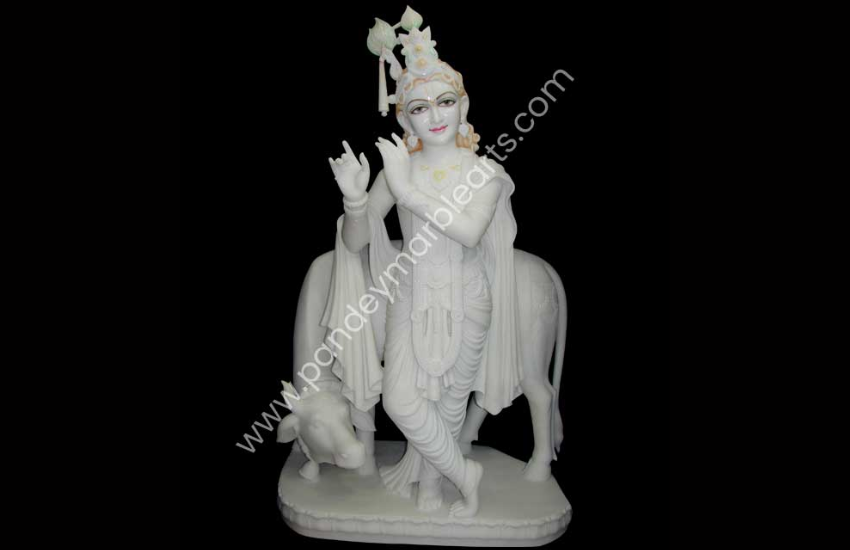When it comes to choosing a god statue for your home temple, the decision goes beyond mere appearance. The purity, durability, and spiritual significance of the idol are most important for keeping your temple sacred and full of positive energy. Although marble dust statues have gained popularity in recent years, are they as good as pure marble ones?
Marble dust murtis look attractive at first sight, but their composition and longevity often raise questions. On the other hand, marble is considered the purest and ideal material for divine idols. It is naturally formed and is believed to carry positive energy. Moreover, its fine grain and calcitic composition allow for intricate carvings and detailed work, giving marble murtis a beauty and elegance that is hard to match, making them truly captivating and long-lasting.
The choice of material for the idol can deeply influence the ambience. This makes it important to understand how marble dust moortis compare to pure marble ones in terms of durability, spiritual importance, and maintenance. Let’s find out whether these marble dust idols are worth all the hype.
What Exactly is a Marble Dust Murti?
A marble dust murti is an idol made by mixing finely powdered marble dust, collected after cutting or shaping real marble, with resin. The two are mixed together and filled into fiber molds, molded, and subsequently polished or painted to resemble real marble murtis.

In the market, they are often referred to as fiber murtis or fiber models due to the presence of resin. Though they can look smooth and beautiful, they are not carved from a single block of stone; instead, they are manufactured.
In the shastras, pure marble is said to be the most sacred material for making divine idols. It is natural, untainted by chemicals, and thought to have spiritual energy. For centuries, pure marble has not only been used for home temples but also for large community mandirs. A murti created from real marble is regarded as satvik and durable, retaining its glow and sanctity for generations.
At the same time, marble dust murtis are less expensive and lighter in weight. Additionally, they are less durable and spiritually valuable.
How Marble Dust Statues are Different from Pure Marble Statues?
Marble dust and pure marble statues may look similar at first, but they differ significantly in nature and value. A pure marble statue is hand-carved from a single block of natural stone. Every curve and detail is shaped by skilled artisans, and the marble itself is formed by nature over thousands of years. Such idols are believed to have prana (living energy) and are considered suitable for daily worship.
In comparison, marble dust statues are created by blending marble powder with resin or other binding materials and then casting them into fiber molds. The method is industrial, not handcrafted, and the statue’s surface beauty often hides its artificial base. They may be lighter and more affordable, but they carry no natural life force. In spiritual terms, they are seen as lifeless or “all fake,” making them less ideal for sacred rituals.
Do Marble Dust Murtis Have the Same Spiritual Value as Makrana Marble Statues?
The white makrana marble statues has held a sacred place in idol-making for centuries. It is pure, natural, and considered to possess divine vibrations that resonate deeply with a devotee’s prayers. According to traditional belief, idols carved from marble can hold pran once consecrated, making them powerful centers of energy in home and community temples. Their presence is believed to have an aura of positivity, peace, and blessings in the environment.
On the other hand, marble dust moortis are not of the same spiritual value. Marble powder is combined with fiber resin and cast into a mold, sometimes even painted or coated to mimic the appearance of actual marble.
There is no energetic life in them, no pran, only a lifeless form. Unfortunately, nowadays, such idols are even coated with silver to mislead buyers, playing with people’s sentiments and charging the same price as genuine marble. Spiritually, they have no significance and no real value in worship.
Why is Marble Believed to Possess Positive Energy?
In Indian culture, marble, particularly Makrana marble, is regarded as a satvik material, being naturally pure and not processed with any chemicals. Formed deep within the earth over thousands of years, it is believed to absorb and store the subtle energies of nature. When shaped into a deity idol, this energy is said to mix with the divine presence, creating a steady flow of positivity within the area.
Pure marble murtis are usually said to have a cool, tranquil energy. Devotees feel peace when standing before them, as if the stone itself carries a gentle vibration that soothes the mind and heart. After consecration, a marble idol is said to possess pran that makes worship powerful and significant.
How Long Do Marble Dust Murtis Last Compared to Pure Marble Ones?

A pure marble murti is known for its strength and timeless beauty. Carved from a single block of stone, it can last for generations without losing its shine or detail. Many temples across India still have marble moortis that are hundreds of years old, standing gracefully despite weather, constant worship, and the touch of countless devotees. The natural density of marble resists chipping and fading, making it a truly lasting choice for a sacred idol.
Marble dust murtis are made by mixing marble powder with resin; they lack the solid strength of natural stone. Over time, their surface can develop cracks, the paint may fade, and the edges can chip easily. Even gentle cleaning can sometimes cause damage. In many cases, they lose their original finish within a few years, especially when placed in open or humid environments.
Conclusion
When it comes to choosing a god moorti for your temple, the question is simple: do you want a lifeless object or a divine presence? Marble dust idols may be cheaper, but they have no spiritual power and no lasting value. They are manufactured, not carved. Within a few years, they lose their shine, develop cracks, and end up needing replacement.
A pure Makrana marble statue is entirely different. It is carved from natural stone, holds positive energy, and, once consecrated, becomes a vessel of divine blessings for generations. Its strength, grace, and spiritual depth cannot be replicated by powders and resins.
Pandey Moorti Bhandar understands this deeply. For generations, they have been crafting murtis only from genuine Makrana marble, ensuring every idol is as pure as the devotion it represents. They stand firmly against the growing trend of marble dust idols and remain committed to offering only authentic, spiritually significant statues.
FAQs
Are Marble Dust Murtis Durable Enough for Daily Worship?
Marble dust murtis are not as durable as pure marble idols. They can chip, crack, or fade with regular handling, cleaning, or exposure to moisture. While they may last for a short time, they are not ideal for long-term daily worship, especially if you want something to last for generations.
Is Marble Dust Idol Good for the Home?
Marble dust idols can look attractive, but they do not carry the same purity or positive energy as natural marble. They are more decorative than spiritual. If your aim is true devotion and lasting blessings in your home, a pure marble moorti is a much better choice.

